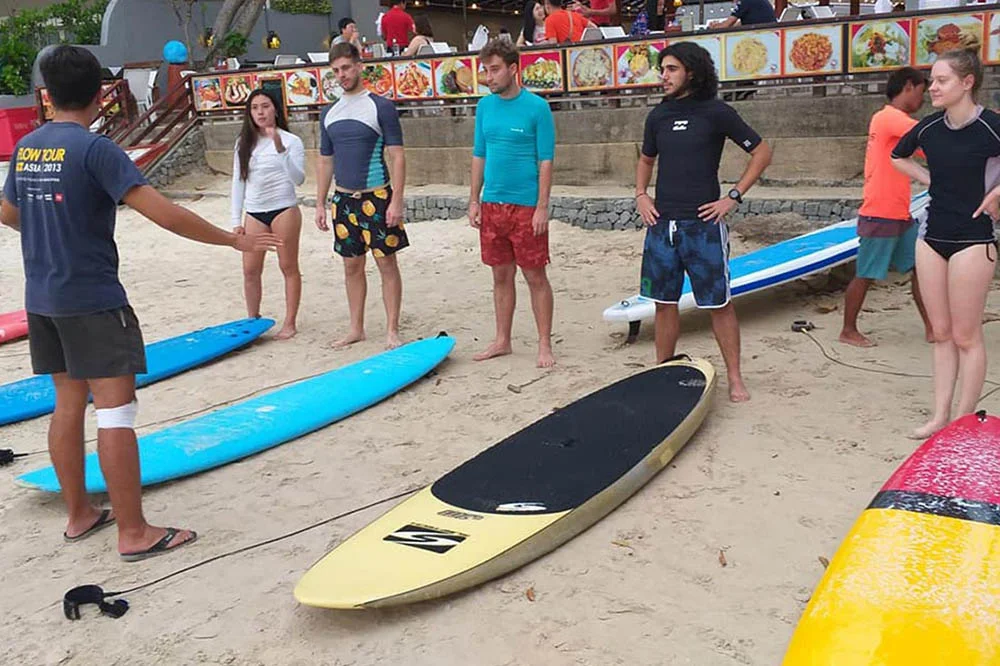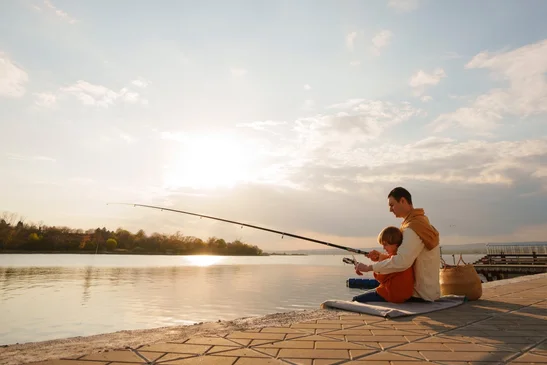One of the most alluring things about traveling is exploring a new place, having new experiences, and maybe even learning something new. What often surprises visitors to Phuket, especially when they come here between April-November, is the local surf scene. Thailand isn’t really considered a surf destination and the vast majority of tourists happen to be here during the few months a year when there are few, if any, waves. However, when the winds turn and the monsoon season whips into action the resident surfers dust off and wax up their boards preparing for their favorite time of year – the surf season.
Wave Quality
There’s no need to sugarcoat it, the waves in Thailand aren’t exactly world class. That being said, the dedicated can manage to catch some waves most days during monsoon season. On rare occasions the waves can be pretty good, but the relentless onshore winds during the rainy season wreak havoc on the surf. The tops of waves are scoured, the shape is disorganized, and the interval between waves is short and creates messy conditions. However, skilled surfers can have fun in these conditions which are typically more challenging for beginners.
Less often, pressure systems which push north past Sumatra send long-range ground swell our way resulting in clean surf which, if the sandbars at our beaches are good, can break nicely. This typically happens at the beginning and end of the surf season which also happens to be the time where the winds blow offshore. The average wave size in Phuket is around one meter, but can reach 3+ meters at times.
Where to Surf
Basically, every western-facing beach in Phuket gets rideable waves. Kata Beach is by far the most popular spot. The waves here are of medium power and size. You’ll find a generous selection of surf schools and board rentals available and plenty of space along the 1.5km stretch to practice. The more advanced surfers congregate at the south end when the waves are good, and the north end is always smaller if the waves are too big for you. Kata hosts a couple of sizable surf competitions each year which are quite popular and a fun way to bring Thailand’s surf community together.

Surfing at Kata Beach in Phuket | Credit: Hotels.com
Just over the headland to the south is Kata Noi. The waves can sometimes be more powerful here, but the swell direction and tide need to be favorable for the waves to break clean. The beach is smaller than Kata and there are usually only about three spots where you can find semi-consistent shoulders.
Farthest south is Nai Harn Beach at only about a kilometer wide. This spot is a bit more exposed and waves can be more powerful. Surfing here is more challenging and it can be difficult, or impossible at times, to get past the break. Few people usually surf here as it can be quite wild with strong currents and potentially dangerous for the inexperienced.
Patong and Kamala Beaches are both good locations for beginner to intermediate surfers. Schools and board rentals can be found and the waves are softer and more forgiving most of the time.

Tips for Surfing Novices | Credit: Phuket Surfing
Where to Get Equipment
Surfing in Phuket has seen a boost in popularity over the last couple of years. As such, it has become increasingly easier to find boards and equipment around the island.
In the south, the Green Room Surf Shop is a cool and unique spot which has everything you need including locally-made custom boards from Elleciel Surfboards. Big name brands are offered at Freedom Board Sports in Chalong and TP Custom Surfboards in Kata focuses on performance short boards. Saltwater Dreaming in Cherng Talay has been a local favorite for almost two decades and has surfboards, paddle boards, skateboards, and plenty of accessories as well as a surf school. Ripple Surf is a newer addition just near Surin Beach and offers secondhand and new boards, paddle boards, clothing, and accessories, and has a partner surf school “Talay” on Bang Tao Beach.
While Phuket isn’t quite the Bali of Thailand, there’s a burgeoning surf scene, plenty of beaches with waves, and a lively bespoke industry to supply you with the goods to keep the stoke alive.



















